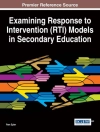How can it be that 50 years after the passage of the Civil Rights Act, our institutions of higher education have still not found ways of reducing the higher education gaps for racial and ethnic groups? That is the question that informs and animates the Equity Scorecard model of organizational change. It shifts institutions’ focus from what students do (or fail to do) to what institutions can do-through their practices and structures, as well as the actions of their leaders and faculty-to produce equity in outcomes for racially marginalized populations. Drawing on the theory of action research, it creates a structure for practitioners to become investigators of their own institutional culture, to become aware of racial disparities, confront their own practices and learn how things are done on their own turf to ask: In what ways am I contributing to equity/inequity?The Equity Scorecard model differs significantly from traditional approaches to effecting change by creating institutional teams to examine and discuss internal data about student outcomes, disaggregated by race and ethnicity. The premise of the project is that institutional data acts as a powerful trigger for group learning about inequities in educational outcomes, and that the likelihood of improving those outcomes increases if the focus is on those things within the immediate control of the participating leaders and practitioners.Numerous institutions have successfully used The Equity Scorecard’s data tools and processes of self-reflection to uncover and document the behaviors and structures that lead to failure to retain and graduate students from diverse racial and ethnic backgrounds with a history of unequal opportunity; and to create the climate for faculty and staff to take ownership of the issues and develop sustainable practices to eliminate racial disparities in academic performance.The Scorecard can be used at a small-scale to analyze individual courses or programs, as well as broader institutional issues.This book presents the underlying concept of funds of knowledge for race-conscious expertise that informs this process, describes its underlying theories; defines the attributes needed to achieve equity-minded practice; demonstrates, through examples of implementation, what different institutions have learned, and what they have achieved; and provides a blueprint for action for higher education as a whole. For college leaders, instructors and support staff who feel the pressure-moral or otherwise-to close the racial equity gap that their institutions produce year after year, this book provides the structure, knowledge and tools to do so. It is also of value to scholars and students of higher education who have an interest in the study of organizational change.
Estela Mara Bensimon & Lindsey Malcom
Confronting Equity Issues on Campus [PDF ebook]
Implementing the Equity Scorecard in Theory and Practice
Confronting Equity Issues on Campus [PDF ebook]
Implementing the Equity Scorecard in Theory and Practice
قم بشراء هذا الكتاب الإلكتروني واحصل على كتاب آخر مجانًا!
لغة الإنجليزية ● شكل PDF ● صفحات 300 ● ISBN 9781000973525 ● محرر Estela Mara Bensimon & Lindsey Malcom ● الناشر Taylor and Francis ● نشرت 2023 ● للتحميل 3 مرات ● دقة EUR ● هوية شخصية 9073374 ● حماية النسخ Adobe DRM
يتطلب قارئ الكتاب الاليكتروني قادرة DRM












